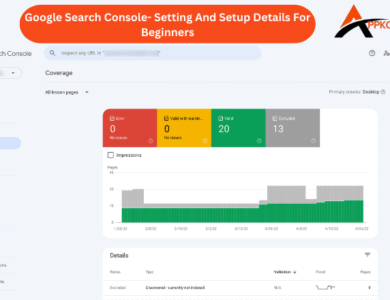
In today’s competitive online landscape, understanding keyword clustering is essential for any marketer or website owner to get better keyword positions with the use of SEO Strategies.
Keyword clustering is a modern SEO Technique that focuses on the semantic relevancy of the keywords clustering or grouping to help the search engine understand the relevancy of your Content.
These strategies ultimately boost your position of keywords and enhance the user experience.
In this guide, we will dive deep into the concept of keyword clustering, how to create it, and its benefits for your SEO Efforts.
What is Keyword Clustering?
Keyword clustering is an SEO Technique in which similar keywords target those with similar intent. Using the same intent keyword creates comprehensive, informative Content for users instead of focusing on a single keyword.
For example, suppose you’re creating Content around “home workout equipment.” Keywords like “best home workout equipment,” “affordable home workout gear,” and “top-rated fitness equipment for home use” can be grouped in a single clustering.
This helps you cover the topic more comprehensively, making it easier for search engines to recognize the Content as authoritative.
Why Keyword Clustering is important for SEO
Improved Relevance and User Intent
Search engines provide content authority that serves the user intent rather than focusing on individual keywords. Keyword clustering makes the Content perfect in terms of information sense. Your Content can meet diverse user needs and search intents by covering multiple related topics in one piece, making it more relevant to users.
Enhanced Ranking Potential
Targeting clusters increases the chance of ranking for multiple keywords. Instead of one main keyword, you can potentially rank for several terms, broadening your reach on search engine results pages (SERPs).
Better Content Structure and Navigation
Keyword clustering increases domain authority due to the proper information and linking with other informational pages. This technique not only improves the user experience but also signals to search engines that your website has comprehensive coverage of a topic.
Reduced Content Redundancy
With keyword clustering, you’re less likely to create redundant Content targeting similar keywords on different pages. This reduces keyword cannibalization, where multiple pages compete for the same search term, potentially harming your SEO performance.
How to Create Keyword Clustering – Step-by-Step Guide
Conduct Keyword Research
Use keyword research tools like Ahrefs, SEMrush, or Google Keyword Planner to generate a list of potential keywords related to your primary topic.
Check keywords with similar intent but different phrasing, as these will form the foundation for your clusters.
Identify Clusters Based on User Intent
Create the keyword group based on user intent.
For example:
- Informational Intent: Keywords that indicate users want to learn about a topic, like “how to use home workout equipment.” “How to gain weight”
- Transactional Intent: Keywords that suggest the user is ready to purchase, such as “buy affordable workout equipment.”
Grouping keywords by intent ensures that each cluster aligns with what users search for about the topic.
Create Content Based on Each Cluster
After identifying clusters, create individual pages internally linking each cluster. For example, if you have a cluster around “affordable home workout equipment,” you can make a page discussing budget-friendly options, connecting it to related topics like “best home workout routines.”
This technique can be very powerful and authoritative in improving SEO.
Optimize for Primary and Secondary Keywords
On each content page, focus on the primary keyword but integrate secondary keywords naturally. This will help the content rank for various keywords within the cluster. Include these keywords in headings, meta descriptions, image alt texts, and the content body.
Interlink Related Content
Interlink pages that are part of the same keyword cluster. This helps search engines understand the relationship between pages and encourages users to explore related Content, improving engagement and reducing bounce rates.
Internal linking provides detailed information about the topic if you can create Content with proper keyword grouping.
Best Practices for Successful Keyword Clustering
The following are some points to keep in mind when clustering keywords.
- Prioritize User Intent: Always consider what the user is looking for and provide Content that addresses their needs.
- Use Natural Language: Avoid keyword stuffing. Instead, focus on creating Content that naturally incorporates secondary keywords. Always use easy-to-understand sentences with proper examples.
- Update Content Regularly: SEO trends and user needs evolve, so regularly updating clustered Content helps maintain relevance and keep an eye on the latest updates regarding the latest information.
- Leverage Long-Tail Keywords: Long-tail keywords are often easier to rank for and have higher conversion rates, making them valuable additions to keyword clusters.
Best Tools for Effective Keyword Clustering:
Many tools are available for this purpose; two major ones are discussed.
- SEMrush Keyword Magic Tool:
- Arefs Keyword Explorer:
How to Create Keywords Grouping/Clustering with the use of SEMrush Tool
- Open the SEMrush tool and click on Keyword Overview.
- Type the main keyword that you want to discuss in the main topic and Hit the Enter button.

- You can see many keywords showing here with different search intents.
- SEMrush also provides the feature to select the intent. Here, we will select the informational intent of keywords.

- Here, we can create keyword clustering with the intent according to the search volume and keyword difficulty.

- After creating the keyword group you have to choice the hire a proper content service provider or professional writer to create a comprehensive detailed topic with the covering of all relevant keywords.
Keyword Clustering with Ahref Keyword Explore tool
- Open the ahref keyword explore tool and enter the keyword in the search Bar.

- Here, you can see the different keywords according to the Keyword intent.
- Here, you can select different keywords and create a group of keywords for content creation.

Common Mistakes to Avoid During Keyword Clustering.
Creating Overly Broad Clusters:
Don’t group unrelated keywords, as it dilutes the focus and relevance of your Content.
Always create semantics (those keywords that have similar search intent), and the same keywords don’t create groupings that are irrelevant to keywords.
Ignoring Search Volume:
While clustering around low-volume keywords can be valuable, it ensures enough search interest to justify targeting certain clusters.
Stick to a primary keyword and a few secondary ones.
Always try to discuss natural keywords, and don’t go overboard with keywords or keyword stuffing. Overloading Content with too many keywords can make it look spammy and harm readability.
Conclusion: The Future of SEO and Keyword Clustering
Keyword clustering is a powerful technique that goes beyond traditional keyword targeting. In 2024, search engines rank websites that provide detailed information about their users with proper keyword Clustering . With proper keyword Grouping, you can optimize your site for multiple keywords, enhance user experience, and ultimately improve your SEO results.



